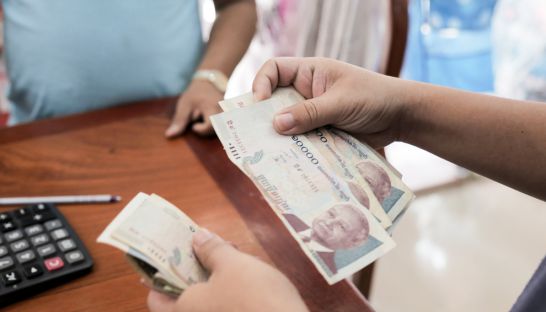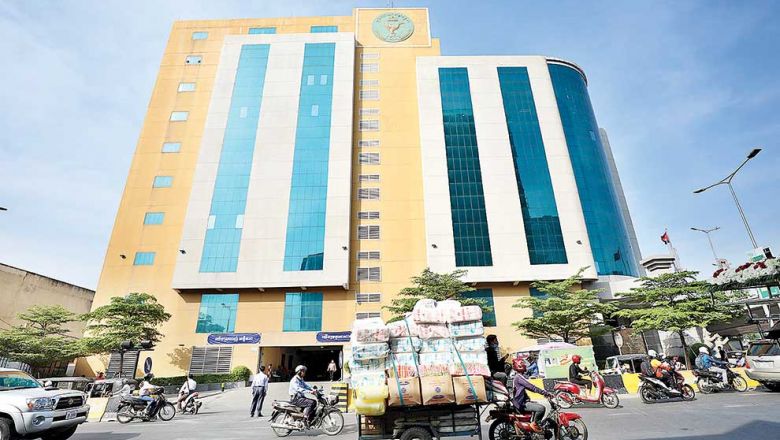Repo auction offers quick liquidity fix
Repo auction offers quick liquidity fix
The National Bank of Cambodia rolled out a new mechanism yesterday that offers immediate liquidity to financial institutions to cover their payments and reserve obligations, while giving the central bank greater control over the country’s money supply and moving toward the establishment of a benchmark interest rate.

Under its new Liquidity-Providing Collateralised Operation (LPCO) scheme, Cambodian banks and microfinance institutions (MFIs) can borrow funds in riel from the central bank at low interest rates using negotiable certificates of deposit (NCDs) as collateral. The NBC offers the short-term interbank loans through an open-market operation held periodically.
Chea Serey, director-general of the National Bank of Cambodia (NBC), said the LPCO has many purposes, including promoting NCDs and greater use of riel currency. But its ultimate goal is to establish a benchmark interest rate, similar to the one managed by the US Federal Reserve, that gives the NBC indirect control of the money supply.
“We don’t expect to get this [benchmark] rate immediately through the first few LPCOs, because the market will need to adjust and adapt to this new operation,” she said yesterday. “We hope that over time a rate will stand out clearly. Once this rate is established, NBC can then influence it through our subsequent operations.”
In its first LPCO yesterday, the NBC made 40 billion riel ($9.89 million) available to Cambodian financial institutions. The “Dutch auction”, which settled on an interest rate of 3 percent, allowed banks and MFIs that submitted NCDs with a residual period of no less than three months to receive funds equivalent to the face value of their certificates. A 10 percent “haircut” was imposed on US-denominated NCDs as a hedge against foreign currency exchange risks.
The auction concluded with repurchase agreements, or repos, signed for some 12 billion riel, the NBC said in a release yesterday.The key ingredient of the new mechanism is the negotiable certificate of deposit, a short-term interest-bearing certificate introduced by the NBC in 2013 to help financial institutions better manage their liquidity. NCDs are issued in riel or US dollars against deposits placed in the central bank, with tenors ranging from two weeks to one year.
Earlier this month, the NBC set a once-weekly schedule for issuing NCDs, a move aimed at reducing transaction costs and promoting a secondary market for the tradable certificates.
Leonie Lethbridge, CEO of ANZ Royal Bank, said the LPCO scheme provides flexibility and convenience, allowing banks in need of a quick liquidity fix to use the surplus capital locked up in their NCDs.
“Simply put, banks get an opportunity to pledge the NCDs, versus the earlier option where they were forced to sell them to raise liquidity when required,” she said.
During this trial phase of the LPCO, the central bank has set repurchase agreements to mature in three months.
“At the end of the repo period, if the bank or MFI does not wish to extend the liquidity facility, they can return the funds to the NBC and receive their NCD in exchange,” Lethbridge explained. “Alternatively, they can participate in the next auction and continue availing the liquidity.”
Hout Ieng Tong, CEO of Hatha Kaksekar Ltd (HKL), whose microfinance institution currently holds NCDs valued at around 600 million riel ($148,000), said he joined yesterday’s auction and received 100 million riel ($25,000) in the LPCO.
He said in the past when HKL deposited its surplus capital in the central bank the money was locked up for a specified period, and withdrawing it early carried a penalty.
“Now we can use NCDs as collateral to get money in riel from the NBC immediately whenever we need it,” he said. “This is a good method, because in many cases we need money immediately just a few days after depositing it in the central bank.”
Ieng Tong said that while many of the country’s bankers, including himself, do not fully understand the LPCO process yet, he believes it presents an invaluable tool for promoting the use of riel currency in Cambodia’s highly dollarised banking system, and will enable the central bank to better control the money supply.














